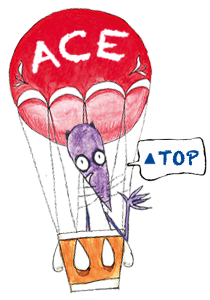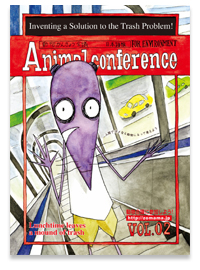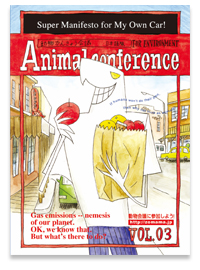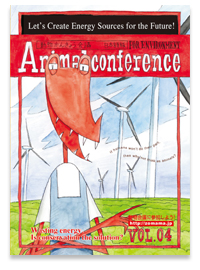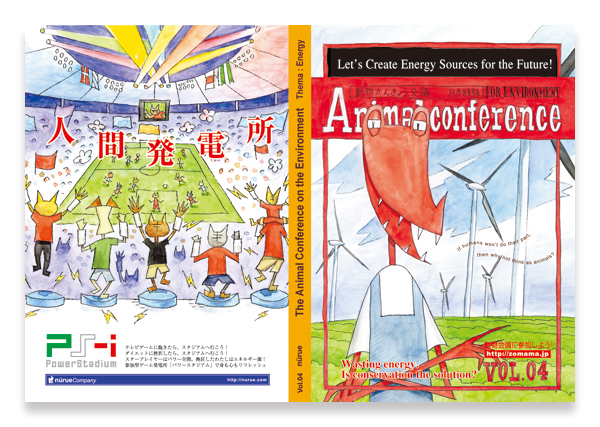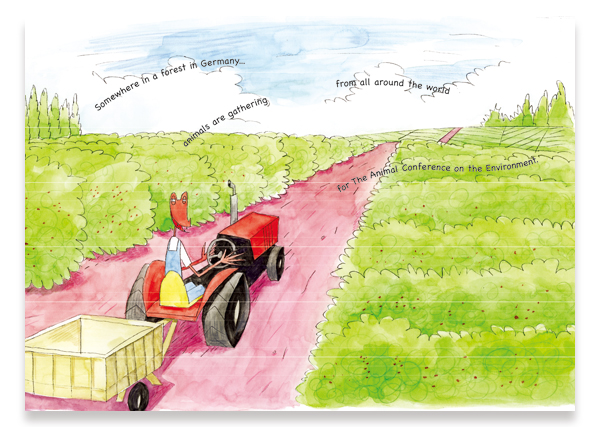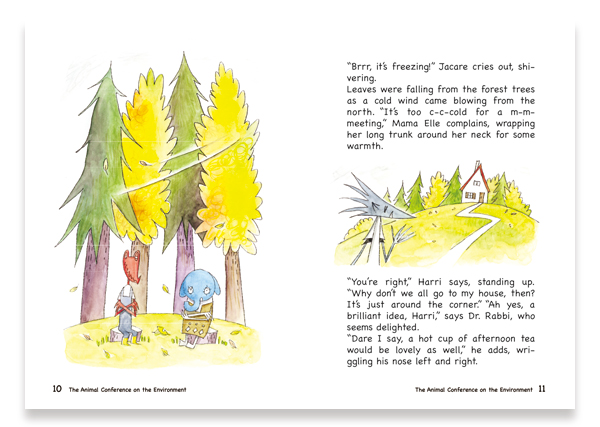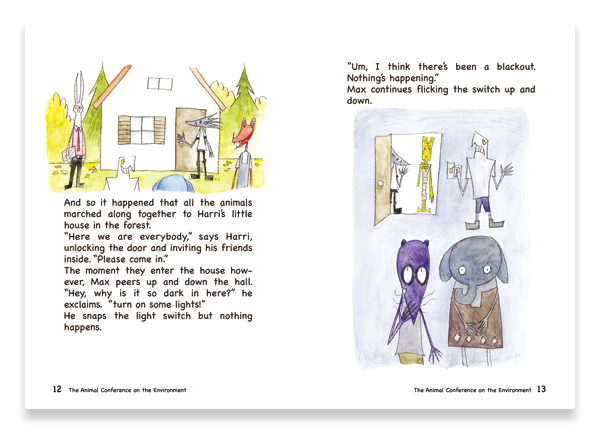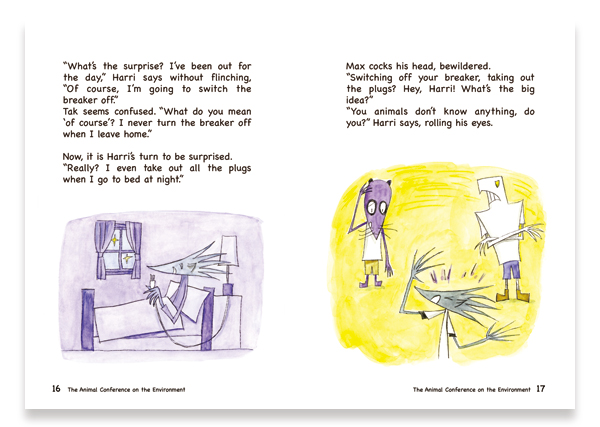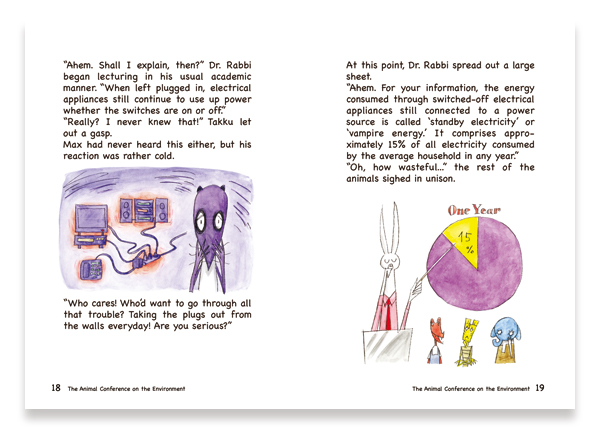


|
|
|
[The Picture Book]
The Picture Book Series “Animal Conference on the Environment” 7 volumes  In Japan, the Animal Conference on the Environment series has been designated as chosen reading material by the National Japan School Library Association. And, now, its popularity is expanding abroad: About 10,000 copies of “Our Earth is in Trouble!” (in the Korean language) have been sold. Published by Daniel’s Stone Publishing, this Korean version, combining the first three volumes into one, is also available in Japan. It has been adopted as a supplementary reading material in South Korean elementary schools, where it was favorably received with about 40,000 copies sold. The first three volumes have been also translated into Chinese and published in Taiwan, where they were given words of recommendation by the former Minister of the Environment. 9,000 copies of the first edition were published. Title, subtitle, and a short description of each volume [English]
Vol.6 On Oceans and Rivers (a tentative title) Round and round, water circles the earth. Vol.7 On Animals (a tentative title) Once the conference is concluded, will we have a home to return to? [Synopsis]
“The Animal Conference on the Environment”Project Animals of the world, sensing a world crisis stemming from the environmental destruction going on around them, hold a conference in the forests of Germany. They can no longer leave matters in the hands of humans. Representing Japan is Tuck, the raccoon dog; from India, Trajii, the tiger; from the US, Wasshi, the eagle; from Brazil, Waneer, the crocodile; from Germany, Harry, the hedgehog; from Kenya, Zomama, the elephant; and from England, Dr. Rabby, the rabbit. These seven animals convene to discuss environmental issues. The theme for vol. 1 is “Forest”  Just as Harry the hedgehog, the representative from Germany, who is presiding over the meeting, makes his opening speech, the animals start laying out their various lunch spreads. Seeing a sushi box, the crocodile from Brazil draws close to the raccoon dog and exclaims, “The jungles of the Amazon are being destroyed for those wooden chopsticks!” The comment spurs a heated debate over “throwaway” utensils. Disposable products are “wasteful,” agree the tiger from India and the elephant from Kenya, as they look accusingly at the raccoon dog from Japan. In the ensuing dialogue, even the desertification of Africa gets blamed on the chopsticks. The raccoon dog finds himself in a dilemma between the age-old Japanese tradition of using disposable chopsticks and the damage that they are causing the environment. Meanwhile, beside him, the American eagle emphasizes the convenience of disposable fast food containers. The rabbit from England explains that the diminishing forests are causing global warming and presents data to show just how dire the situation is. But is Brazil’s disappearing jungle really the result of Japanese disposable chopsticks? As they continue their discussion, the animals begin to understand the misconceptions and misunderstandings they harbor regarding chopsticks. The theme for vol. 2 is “Garbage”
When they are finished with lunch, the area is strewn with sushi boxes, aluminum cans, pet bottles, hamburger wrappers . . . The hedgehog from Germany points out that throwing away aluminum cans is a waste of natural resources. The eagle from the US shrugs it off by suggesting recycling. When the rabbit from England explains that even the recycling of aluminum cans requires electricity, the crocodile from Brazil bemoans the sacrifice of the Amazon jungle to generate that power. Accusatory stares settle on the raccoon dog from Japan. Soon the conversation shifts to ways to prevent the generating of garbage. The elephant from Kenya suggests the reuse of bottles. Germany’s hedgehog advises the use of thermos jugs, but Japan’s raccoon dog emphasizes the convenience of vending machines. And the eagle from the US seems to have invented something very useful to prevent the generating of garbage. The theme for vol. 3 is “Cars”  When they are finished with lunch, the area is strewn with sushi boxes, aluminum cans, pet bottles, hamburger wrappers . . . The hedgehog from Germany points out that throwing away aluminum cans is a waste of natural resources. The eagle from the US shrugs it off by suggesting recycling. When the rabbit from England explains that even the recycling of aluminum cans requires electricity, the crocodile from Brazil bewails the sacrifice of the Amazon jungle to generate that power. Accusatory stares settle on the raccoon dog from Japan. Soon the conversation shifts to ways to prevent the generating of garbage. The elephant from Kenya suggests the reuse of bottles. Germany’s hedgehog advises the use of thermos jugs, but Japan’s raccoon dog emphasizes the convenience of vending machines. And the eagle from the US seems to have invented something very useful to prevent the generating of garbage. The theme for vol. 4 is “Energy”  Moving from the chilly forest to the hedgehog’s house, the animals arrive to find that the hedgehog has disconnected the circuit breaker and that all the electrical appliances has been unplugged. The eagle and raccoon dog ask the hedgehog the reason for this and are surprised when they learn about standby electricity. When the eagle and raccoon dog insist on turning up the light and the air conditioner, the tiger and elephant admonish them for their extravagant habits. The hedgehog, too, tries to persuade the animals to economize. The crocodile from Brazil and the elephant from India are angry at the unfairness of the disparity in energy consumption. “The world’s limited natural resources are being used up in great quantities by a small handful of countries,” they say. The hedgehog and raccoon dog counter that new developments like solar systems and wind energy hold hope for the future . . . The theme for vol. 5 is “Food”  With the party now hungry again, the hedgehog serves up a home-cooked meal of pasta with tomato sauce and lots and lots of shrimp. The raccoon dog is delighted -- he adores shrimp -- and dives into the food. The crocodile from Brazil nastily chides, “Japan is devouring the last of the world’s shrimp.” The raccoon dog argues that shrimp can be cultivated, but is told that breeding shrimp was another cause of environmental destruction. The raccoon dog and eagle demand tasty food ingredients regardless of where they are or what season it is. The other animals cite Japan’s low domestic food sustenance rate and the high food mileage of air-transported tuna. The African elephant promotes the consumption of local produce and seasonal vegetables. Hearing of the heavy burden on the environment to provide tomatoes during the German winter, the hedgehog droops his head. The crocodile from Brazil sees that the raccoon dog had not finished his plate of pasta and scolds, “Don’t waste food!” Germany, where the dieting hedgehog is from, is also one of the few countries rich in food provisions. The rabbit from England lectures that hunger is present in most areas of the world. But we all love good food. What should we do? |
| (c) NURUE Inc. All rights reserved. |





